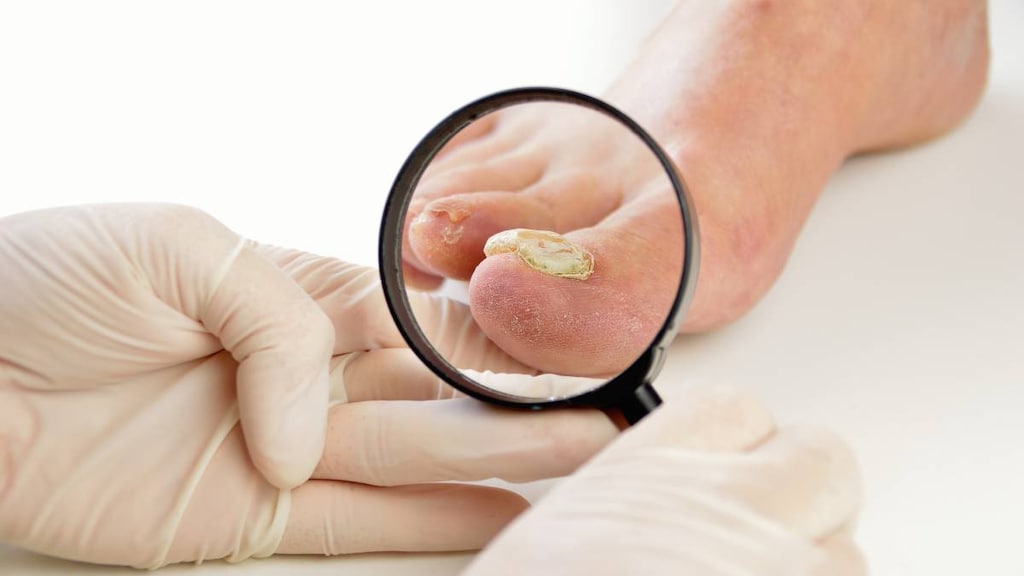Dosage Forms
Excipient information presented when available (limited, particularly for generics); consult specific product labeling.
Solution Pen-injector, Subcutaneous [preservative free]:
Tremfya: 100 mg/mL (1 mL) [contains polysorbate 80]
Solution Prefilled Syringe, Subcutaneous [preservative free]:
Tremfya: 100 mg/mL (1 mL) [contains polysorbate 80]
Pharmacology
Mechanism of Action
Human IgG1 monoclonal antibody selectively binds with IL-23, thereby reducing serum levels of IL-17A, IL-17F, and IL-22. Guselkumab inhibits the release of proinflammatory cytokines and chemokines.
Pharmacokinetics/Pharmacodynamics
Distribution
Vd: 13.5 L
Metabolism
Degraded into small peptides and amino acids via catabolic pathways in the same manner as endogenous IgG.
Time to Peak
5.5 days
Half-Life Elimination
15 to 18 days
Use: Labeled Indications
Plaque psoriasis: Treatment of moderate to severe plaque psoriasis in adults who are candidates for systemic therapy or phototherapy.
Contraindications
Serious hypersensitivity to guselkumab or any component of the formulation.
Dosage and Administration
Dosing: Adult
Plaque psoriasis: SubQ: 100 mg at weeks 0, 4, and then every 8 weeks thereafter.
Dosing: Geriatric
Refer to adult dosing.
Reconstitution
Allow prefilled syringe to reach room temperature (~30 minutes) in original carton before injecting. Do not warm in any other way. Intact solution should be colorless to light yellow; solution may develop a few fine, translucent particles. Discard unused portion of prefilled syringe.
Administration
SubQ: Administer SubQ into front of thighs, lower abdomen (except for 2 inches around navel), or back of upper arms; do not inject into areas where the skin is tender, bruised, red, hard, thick, scaly, or affected by psoriasis.
Storage
Store at 2°C to 8°C (36°F to 46°F) in the original carton; do not freeze. Protect from light. Do not shake.
Drug Interactions
Belimumab: May enhance the immunosuppressive effect of Biologic Anti-Psoriasis Agents. Avoid combination
InFLIXimab: May enhance the immunosuppressive effect of Biologic Anti-Psoriasis Agents. Avoid combination
Vaccines (Live): Guselkumab may enhance the adverse/toxic effect of Vaccines (Live). Avoid combination
Adverse Reactions
>10%:
Infection: Infection (23%)
Respiratory: Upper respiratory tract infection (14%)
1% to 10%:
Central nervous system: Headache (5%)
Dermatologic: Tinea (1%)
Gastrointestinal: Diarrhea (2%), gastroenteritis (1%)
Hepatic: Increased liver enzymes (3%)
Immunologic: Antibody development (6% to 9%; neutralizing antibodies: 6% to 7%; efficacy of guselkumab may be affected)
Infection: Herpes simplex infection (1%)
Local: Injection site reaction (5%)
Neuromuscular & skeletal: Arthralgia (3%)
<1%, postmarketing, and/or case reports: Candidiasis, hypersensitivity reaction, migraine, severe hypersensitivity reaction, skin rash, urticaria
Warnings/Precautions
Concerns related to adverse effects:
- Hypersensitivity reactions: Serious hypersensitivity reactions may occur; may require hospitalization. Discontinue use and initiate appropriate therapy if serious hypersensitivity reactions occur.
- Infections: Guselkumab may increase the risk of infections; upper respiratory tract infections, gastroenteritis, tinea infections, and herpes simplex infections have occurred more frequently. Consider the risks versus benefits prior to treatment initiation in patients with a history of chronic or recurrent infection; treatment should not be initiated in patients with clinically important active infections until it is resolved or treated. Monitor for infections; patients should seek medical attention for signs/symptoms of a clinically important infection (acute or chronic). If a serious infection develops or is unresponsive to appropriate therapy for the infection, monitor closely and discontinue guselkumab until the infection resolves.
- Tuberculosis: Patients should be evaluated for tuberculosis (TB) infection prior to initiating therapy. Do not administer to patients with an active TB infection. Treatment for latent TB should be administered prior to administering guselkumab. Consider anti-TB therapy prior to treatment initiation in patients with a history of latent or active TB in whom an adequate course of TB treatment cannot be confirmed. Monitor closely for signs/symptoms of active TB during and after guselkumab treatment.
Other warnings/precautions:
- Immunizations: Patients should be brought up to date with all immunizations before initiating therapy. Live vaccines should not be given concurrently; there are no data available concerning secondary transmission of infection by live vaccines in patients receiving therapy.
Monitoring Parameters
Tuberculosis screening (prior to initiating and periodically during therapy); signs and symptoms of infection, including tuberculosis (during and after treatment).
Pregnancy
Pregnancy Considerations
Guselkumab is a humanized monoclonal antibody (IgG1). Placental transfer of human IgG is dependent upon the IgG subclass, maternal serum concentrations, birth weight, and gestational age, generally increasing as pregnancy progresses. The lowest exposure would be expected during the period of organogenesis (Palmeira 2012; Pentsuk 2009).
Patient Education
What is this drug used for?
- It is used to treat plaque psoriasis.
Frequently reported side effects of this drug
- Common cold symptoms
- Headache
- Injection site irritation
- Joint pain
Other side effects of this drug: Talk with your doctor right away if you have any of these signs of:
- Infection
- Red, painful, or itchy skin that is hot to touch
- Shortness of breath
- Coughing up blood
- Severe cough
- Weight loss
- Passing a lot of urine
- Diarrhea
- Abdominal pain
- Sweating a lot
- Muscle pain
- Signs of a significant reaction like wheezing; chest tightness; fever; itching; bad cough; blue skin color; seizures; or swelling of face, lips, tongue, or throat.
Note: This is not a comprehensive list of all side effects. Talk to your doctor if you have questions.
Consumer Information Use and Disclaimer: This information should not be used to decide whether or not to take this medicine or any other medicine. Only the healthcare provider has the knowledge and training to decide which medicines are right for a specific patient. This information does not endorse any medicine as safe, effective, or approved for treating any patient or health condition. This is only a brief summary of general information about this medicine. It does NOT include all information about the possible uses, directions, warnings, precautions, interactions, adverse effects, or risks that may apply to this medicine. This information is not specific medical advice and does not replace information you receive from the healthcare provider. You must talk with the healthcare provider for complete information about the risks and benefits of using this medicine.




